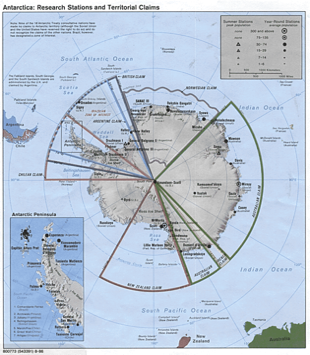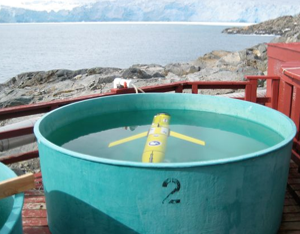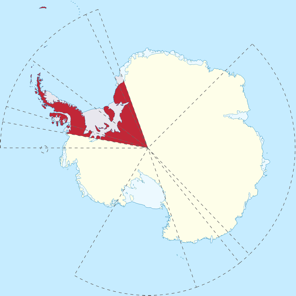Introduction and Status
Caveat: These sections on Legal Issues have been compiled by a generalist in AUV operations and technology. The law concerning AUVs and their operations remains complex with a number of uncertainties and no clear international harmonisation. Operators are advised to seek their own legal advice from qualified legal experts, advice specific to their own country and area of operation.
This Guide does help in prompting some of the questions to ask when seeking advice.
Some key questions on AUV operations in the area ot he Antarctic Treaty
The following questions were posed to Professors Brown and Gaskell prior to the first Autosub Antarctic mission in 2001. There are presented here with their answers from Volume Three of the SUT 'The Operation of Autonomous Underwater Vehicles Series', except for the question on wreck removal, which was in a letter to G. Griffiths. While the answers are immediately appropriate to the UK it is likely that the general principles would apply to other nations.
What impact does the UK Antarctic Act (1994) have on AUV operations within the UK sector?
The Antarctic Act 1994 and the Antarctic Regulations 1995 made under it apply to Antarctica, as defined in the Act, which includes the British sector. It follows that any person on a British expedition to Antarctica and any British vessel entering the British sector would be subject to the national law regime established by these instruments. The principal elements of the regime which may impact upon AUV operations may be summarised as follows. Read more ...
Do any special problems arise in relation to the deployment in Antarctica of AUVs launched from shore?
The legal status of AUVs under United Kingdom law is unclear and, consequently, the law and procedure relating to AUVs launched from shore in Antarctica is uncertain. It would seem advisable to consider two possibilities: (1) that an AUV is, or might in future be treated as, a ship in law; and (2) that an AUV is not a ship in law. Read more ...
What other protocols, national, or international law may affect AUV operations in Antarctica?
AUV operations in Antarctica are governed by rules of international law, principally laid down in the series of related treaties known as the Antarctic Treaty System, and by rules of national law, most of which are the implementation in national law of the provisions of the Antarctic Treaty System. Read more ...
Are there any special considerations for operations under ice shelves?
Reference is made to ice-shelves in the definition of Antarctica in section 1(1) of the Antarctic Act 1994. The definition includes 'the continent of Antarctica (including all its ice shelves)' and 'all islands south of 60° S latitude (including all their ice-shelves)'. Read more ...
Is there any law which might require the owner of an autonomous submarine vehicle wrecked in Antarctic waters to find and/or remove it?
Note: This answer was written before the publication in 2007 of the Nairobi Wreck Removal Convention and its coming into force on 14 April 2015 when there were 15 states party to the Convention. The UK adopted the Convention on that date; the current list of countries is available here. This website's authors are not aware of any public document on the implications of the Nairobi Wreck Removal Convention for AUVs.
Looking first at the general law, the Merchant Shipping Act 1995 empowers harbour and conservancy authorities (s. 252) and lighthouse authorities (s. 253) to remove wrecks in certain circumstances and to reimburse themselves out of the proceeds of sale of the vessel recovered. The Act applies to England and Wales, Scotland and Northern Ireland but may be extended by Order in Council to ‘any relevant British possession’ (s.315), which includes ‘any colony’ (s.313), thus making it potentially applicable to the British Antarctic Territory. Read more ...
Map of Antarctic Territorial claims (in abeyance) and research stations. From commons.wikimedia.org, in the public domain.
Legal Issues of AUV Operations south of 60˚S

What impact does the UK Antarctic Act (1994) have on AUV operations within the UK sector?
The Antarctic Act 1994 and the Antarctic Regulations 1995 made under it apply to Antarctica, as defined in the Act, which includes the British sector. It follows that any person on a British expedition to Antarctica and any British vessel entering the British sector would be subject to the national law regime established by these instruments. The principal elements of the regime which may impact upon AUV operations may be summarised as follows:
• The permits system
Provision is made in several sections of the Act requiring permits to be obtained for various activities in Antarctica. The number and type of permits required depend upon the nature of the activity in question.
• Conservation of Antarctic fauna and flora
In the interests of the conservation of Antarctic fauna and flora, UK nationals are forbidden to do various things in Antarctica except under a permit granted under the Act or under a written authorisation from another State Party to the 1991 Protocol on Environmental Protection to the Antarctic Treaty. The forbidden activities include 'use of a vehicle, vessel or aircraft in a manner that disturbs a concentration of native mammals or native birds' and doing 'anything that is likely to cause significant damage to the habitat of any native mammal, bird, plant or invertebrate'.
• Special areas
The Act makes provision for two types of special area, areas restricted under the 1991 Protocol and places protected under a 1980 Convention for the Conservation of Antarctic Marine Living Resources (CCAMLR). Permits are required for entry into such special areas.
• Environmental evaluations
In applying an Environmental Impact Assessment procedure introduced by the 1991 Protocol, the UK's 1995 Antarctic Regulations distinguish between:
(i) activities likely to have a negligible impact on the environment, for which neither an Initial Environmental Evaluation (IEE) nor a Comprehensive Environmental Evaluation (CEE) is required;
(ii) 'activities likely to have more than a negligible impact', referred to in the Protocol as a 'minor or transitory impact'. For such activities an IEE will normally have to be submitted, though the Secretary of State can require a draft CEE; and
(iii) 'activities likely to have more than a minor or transitory impact'. For this level of expected impact, a draft CEE must be submitted, followed later by a final CEE which has to take account of comments and advice from various sources.
Whether the AUV in question were to be classified as a 'vehicle' or a 'vessel', it would be subject to the above regime (including whatever permits conditions as might be imposed) if operated in Antarctica by any person on a British expedition or from a British vessel.
For more detailed discussion, see:
· On the regime governing marine science research and the deployment of AUVs in Antarctica, the UK Antarctic Act 1994 and the Antarctic Regulations 1995 see Volume Two, Section 5, specifically sections 5.5.1 and 5.5.2.
· On the position of AUVs launched from shore in Antarctica, see below.


Slocum glider in a ballasting tank at the US Palmer Station on Anvers Island, Antarctic Peninsula in preparation for a shore deployment via a rigid hull inflatable boat. Image courtesy Rutgers University.

Map of the British Antarctic Territory, reproduced here under the Creative Commons Attribution-ShareAlike License.
